ASW
|
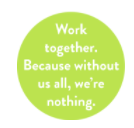 Dear Parent/Guardian, The ASW elementary school counselors would like to help service the needs and wants of our students and parent community the best that we can. For the last two years now, we have created a survey that we feel will help us when planning out our year-long goals for this school year. Also, the data we collect helps us know if we are meeting our own personal program goals. Please click the following link below and answer the questions by checking the box that most fits your choice so we may use this information when planning our school counseling activities. We will distribute this same survey at the end of the year to measure program success. Thank You---Your input is extremely important to us! https://docs.google.com/forms/d/e/1FAIpQLSfqwdYmDcuUy1VXkIrUqtzxYhYfrZqF_qKySOYtJ0ullYKIxw/viewform?usp=sf_link
0 Comments
 A newborn infant, rocking in the arms of his loving parent just after being fed, feels warm, full, calm, and safe. His needs are met — for now. But soon, his body will use up all of the food, his mother will put him down, and a sound will startle him. When this happens, he feels distress, and, unable to control himself, his only response is to cry out in the hope that a parent will come to protect and comfort him. Again and again you respond to the needs of your child. When infants and children are incapable of meeting their own needs, they depend upon attentive adults — you — to help them regulate those needs. These loving interactions with caring parents form attachment bonds. At the same time, in these same interactions, other crucial areas of the infant's brain are being shaped — including the child's stress response systems. Responding to Stress The brain is continually sensing and responding to the needs of the body. Much of this regulation takes place automatically, beyond our awareness. But as we mature, our brain requires that we actively participate in our own regulation. If we thirst, we seek water; when afraid, we prepare to fight or flee. In short, we self-regulate. When these systems develop normally, we are able to deal with complex and challenging situations with age-appropriate solutions — by adulthood these solutions should be thoughtful and creative. When a child's capacity for self-regulation does not develop normally, he will be at risk for many problems — from persistent tantrums to impulsiveness to difficulty regulating his own sleep and diet. Understanding Your Body's Signals Many of the sensations we feel are clear — thirst, for example. But the body tends to use a common set of sensations for different kinds of potential threats. The feelings caused by frustration are very similar to those caused by fear. A fearful child may act sullen and angry, unaware that he is actually anxious about starting in a new classroom. A hungry child may act distracted, irritable, and non-compliant, again unaware that the internal distress he feels is hunger. Learning to tolerate this distress, correctly label the uncomfortable sensations, and develop appropriate, mature ways to respond to these signals is central to healthy development. Learning to Wait The capacity for self-regulation matures as we grow. The first time your baby felt hunger, he felt discomfort, then distress, and then he cried. You responded. And after many cycles of hunger, discomfort, distress, response, and satisfaction, your baby learned that this feeling of discomfort, even distress, will soon pass. You helped him build the capacity to put a moment between the impulse and the action. With this ability, he will eventually learn to take time to think, plan, and come up with an appropriate response to a challenge. When a Child Needs Support Many children have difficulties with self-regulation because their stress-response systems are poorly organized and hyper-reactive. This could be related to many factors, including genetic predisposition, developmental issues, or exposure to chaos and violence. Children with poor self-regulation can disrupt an entire family. They are often impulsive, difficult to soothe, hypersensitive to transitions, and tend to overreact to minor challenges. If these problems are extreme and persistent, or if the behaviors disrupt the family or classroom, a parent should consider further evaluation. What You Can Do Ways to help children who have not learned to self-regulate:
http://www.scholastic.com/parents/resources/article/social-emotional-skills/developing-self-regulation 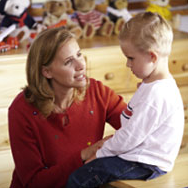 By Bridget Bentz Sizer It's the ultimate do-as-I-say-and-not-as-I-do parenting moment: your preschooler throws a fit because there are blueberries in her pancake—and she didn't want blueberries in her pancake!—and, in an effort to control her tantrum, you counter with your own: "Stop yelling now!" You have just entered into a disciplinary arms race in which there are no winners—only hurt feelings, sore throats and soaring blood pressure. But parenting doesn't have to be a battle. Proponents of positive discipline teach that kids can—and will—behave without threats, bribes, yelling and physicality. Here are seven tips that will set you on the path to better behavior—and a stronger, more peaceful connection with your child.
 Welcome to the start of the 2017-2018 school year. While we are planning and preparing for the next weeks ahead, we came across this counselor's blog that gave wonderful suggestions for students worrying about making and keeping friendships. This article might be a great foundation to start the school year off and a nice resource for the months ahead. We are looking forward to seeing all of you in the hallways very soon. Enjoy the rest of the sunshine-filled days! BEING REFLECTIVE WITH “TROUBLE STARTERS by: globallymindedcounselor.com/about/ “How do I make friends?” “How do I keep friends?” These are two of the questions that I am most frequently asked by students across all grade levels in my daily counseling practice. In response, I always start by turning back to the IB Learner Profile and reviewing with students what it means to be reflective. Students explain their knowledge and understanding of this profile trait and I reiterate that being reflective means thinking about yourself and the role you play in any situation. Then, I turn to one of my most trusted resources to help students in their reflection process and in making meaning of their friendship questions and issues. I pull out my “Trouble Starters” list which I originally found in a book from the American Girl Company called Friends: Making them and keeping them (Criswell, 2006). This resource names 10 actions or choices that a student (or adult) might make that would most likely cause conflict with a friend. 10 Trouble Starters in an infographic I made for use in my counseling practice. Together the student and I look through the list, one item at a time. I make sure the student understands what each action means and that they have context for the statement. We then spend time dialoguing around why this might cause problems with friends. Then, I ask the student to reflect silently on if she/he might have ever intentionally or accidentally engaged in that action. Often the student shares out his/her response and a personal example or connection. After this I always ask, “In the future, what will look different?” At this point, the student usually spends some time thinking and responding about different choices she/he could make to avoid a trouble starter with friends. Sometimes we spend time planning for actual conversations or situations. Sometimes it is more theoretical or vague. No matter what, I always communicate that we are focusing on his/her actions NOT the friend’s actions as the only person we can ever change is our self. I have found that this list of Trouble Starters is a powerful tool for students of all ages as they can make personal connections between their actions and the impact on the friendship. Each trouble starter also seems to be a universal action that students comprehend regardless of home culture, community, or country making this a great resource for the international school community. I have also had many students report back when they 1) caused conflict with friends by using a trouble starter or 2) avoided conflict by choosing a different action. When this happens I always acknowledge the student being reflective and either celebrate or counsel accordingly. Criswell, P.K. (2006). Friends: Making them and keeping them. Middleton, WI: American Girls Publishing, Inc. 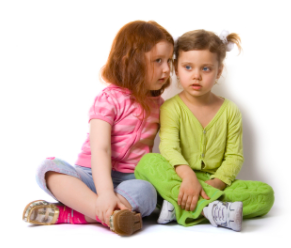 When my daughter entered fourth grade, the classroom dynamics got off to a bumpy start. A few strong personalities — and a new girl jockeying to fit in — led to small conflicts that lasted all year long. In May, the principal called to tell me my daughter and a few other girls were at risk of suspension for that day’s recess if they didn’t clean up their act. Apparently two small groups had volleyed glares that felt intimidating to younger children. It was the proverbial straw. When my daughter arrived home, I said, “Sounds like school was a little rough today.” She burst into tears. She had never been in trouble at school. Most parents associate girl conflicts — and mean-girl tactics — with the middle school years. But conduct known as “relational aggression” (what we think of as “mean girls” behavior) starts much younger. This is the behavior we see when kids manipulate others through friendship withdrawal, silent treatment and gossip. A 2010 study from the State University of New York at Buffalo of children ages 3–12 found that some girls understand relationally aggressive tactics as early as preschool. It also reports that girls associate these tactics with being a girl. In other words, they expect to handle conflict with relational aggression — while boys associate physical aggression with being male. Around second grade, this kind of behavior becomes more sophisticated, and teachers begin to see it in the classroom. “If a girl doesn’t color as neatly, wear the right clothes or can’t do something as well, a second-grader is just as likely to notice as a fifth-grader or a middle schooler,” says Dawn Christiana, a Bellingham elementary teacher. Also beginning in second grade, girls interact more than the younger girls, she says, and become more vocal. “Thus begin the cliques,” says Christiana. What’s normal?Social conflict in elementary school is not new. In fact, conflict among classmates and friends is a normal part of childhood, and parents shouldn’t fear it, says Cubba Reese, a parent educator in the greater Seattle area. What is new? The social pressures girls face today. Roni Cohen-Sandler, Ph.D., author of Easing Their Stress: Helping our Girls Thrive in the Age of Pressure and a longtime psychologist, sees social behaviors in elementary-age girls that used to begin in middle school. Both biology and evolving cultural patterns are contributing to these changes, she says, through earlier physical maturity, exposure to media that portrays relational aggression, more marketing to younger girls and more pressure to achieve academically. As a result, she says, young girls are increasingly anxious, self conscious and competitive. Combine these pressures with the cultural message to girls to play nice (that is, avoid “challenging” emotions such as anger, resentment or jealousy), and social competition among elementary-age girls looks adolescent. JoAnn Deak, Ph.D., author of Girls Will Be Girls, suggests teaching social conflict management skills at younger ages. By middle school, says Deak, the social patterns are habits, and habits are difficult to change. Managing pressuresSo how do we help our daughters manage social pressures and conflict? It starts with building strong connections at home, say experts. Here are some ideas for ways parents can help their girls navigate the new school year: Empathize. If your daughter comes home fuming about a situation, the first step is to empathize — listen without judging or offering advice. When you empathize, you’re modeling a skill she needs to learn, as well as creating connection that’s important for your relationship, says Cohen-Sandler. Remember: Empathizing isn’t asking leading questions that imply she’s been wronged. “It’s important to keep your own indignation in check. You shouldn’t be more upset than she is,” says Reese. Validate a range of emotions. Girls need to know that all emotions, positive and negative, are normal and that “bad emotions” don’t make girls bad. Allowing your daughter’s anger or resentment to play out will help her calm down more quickly than if you minimize the situation, leap to solving the problem or suggest her feelings are unkind. Try something like, “Wow, you are spitting nails, you’re so mad,” says Reese. Help her gain perspective. Media experiences can be effective springboards for important discussions about what someone might be feeling or thinking. When you’re watching a movie together or reading a book, talk about characters’ choices, including feelings, motives and behavior, says Cohen-Sandler. Fiction isn’t as emotionally loaded as discussing a fight with a friend. Seattle parent Alison Krupnick began a mother-daughter book club when her girls were young as a way to discuss friendship and conflict. Help her to identify assumptions. It’s normal to make assumptions about other people’s actions, but it’s important to verify them, says Deak. Girls typically don’t like feeling uncomfortable emotions, and it’s much easier to whisper to a friend than to ask someone why she did such and such. But getting clarity is important, and girls needn’t be confrontational. “Try something like, ‘When you said I couldn’t sit here, I was just wondering why,’” suggests Deak. Discuss possible reasons for another child’s behavior — that will help your daughter see she might have misunderstood the situation. Ask her about the girl’s tone of voice or expression on her face and say, “That’s one possibility. What else could cause those things to happen?” Brainstorm problem-solving. Girls need practice moving from feeling to thinking to become problem solvers. Let your daughter think through the problem before offering help. Get her started with “I wonder what you can do” or “Do you have any ideas?” If she’s stuck, Reese suggests these phrases: “Would you like me to help you think this through?” or “I have one thought; would you like to hear it?” If she says no, don’t push it. Keep in mind “our primary job is not to resolve the problem, but to give the message that girls are resilient and needn’t be afraid of conflict,” says Reese. “Our job is to empathize, to acknowledge the conflict and to give the message that friendships last through conflict.” Tempting as it is to shut down the drama, listening to your daughter and helping her solve challenges will arm her with the emotional skills to tackle bumpy situations with real solutions. These skills will stay with her for life. Bellingham writer Joanna Nesbit remembers fourth grade being hard, even back in the day. Learn more about her writing at joannanesbit.com. Connecting With Kids
“I think my daughter is getting too much screen time,” a friend of mine declared a few days ago, as we were settling down for a meal at a restaurant with our families. As she said this, she simultaneously proceeded to whip a tablet out of her handbag and place it in front of her toddler, “so that the adults could have a good chat.” I don’t blame her; I used the same strategy many times when my children were younger, and I too felt guilty about it.
Since then, however, I have researched the topic in depth, partly because this is something parents and colleagues often question. As an educator and a scholar, I felt that I owed it to parents to have specific, scientific answers that would help them make informed decisions about the welfare and development of their children. What I found is, I believe, good news for parents. First of all, we need to carefully define what we mean by “screen time”. There is a world of difference between a child who spends hours bent over a tablet watching YouTube videos unsupervised, and a child who is playing an age-appropriate video game with a sibling. “Screen time” is too vague a term: it can include television, games, videos, homework on computers, educational apps, etc. The kind of screen time a child is getting is actually more relevant than the time spent on a screen as such. The following rules can help parents be more discerning about their children’s screen time. Screen time that can be beneficial includes:
Screen time becomes a problem when it prevents children from doing sports, playing with their friends or siblings, playing outside, reading, doing their homework or communicating with others, face to face. In the case of my friend’s toddler at the restaurant, I gently suggested that we spend a little bit of time playing with her and reading her a book before our meal arrived. Her daughter was all smiles and babble, and then she got very busy making an extraordinary mess with her food and getting lots of laughs and attention for it; none of this would have happened had she been stuck on a tablet. After the meal, she did get a little restless and grumpy, at which point her mother gave her the tablet to play with so we could have a conversation over coffee. I thought this was a balanced way to deal with the issue of screen time, and I got to have fun with both the little girl and her mother. A final aspect of the debate on screen time is that we must recognise that technology is not going to go away. Keeping our children away from screens altogether will, in the long term, keep them away from many opportunities. Screens have replaced libraries, dictionaries, textbooks, educational documentaries and so on: it would never cross our mind to ban these sources of knowledge, so why would we ban the screens that have replaced them? However, we also have a responsibility to show our children what an appropriate and balanced use of technology looks like. By far the most powerful tool we have to raise our children is our own behaviour: children copy what they see, much more so than they listen to what they are told. In other words, if we tell our children to stay away from their screen, but we spend hours on our phone or computer in front of them, we are wasting our breath. Small details like putting our phone down when we have a conversation, giving children our full attention and eye contact when we greet them, or forbidding screens at the dinner table for the entire family, can make a big difference. I cannot tell you how many times I have hidden my phone under a cushion and ostentatiously picked up a book when I heard my children coming home. Computers and tablets are, in many ways, better than the television sets they are quickly replacing: the experience they offer is much less passive, more challenging for our brains and bodies, and altogether more educational. Instead of banning or severely restricting screen time, let’s become the technology-savvy parents our children need: discerning, informed, available and balanced in our own use of technology. Sources and recommended readings on screen time:
NANCY LE NEZET IS PASSIONATE ABOUT INTERNATIONAL EDUCATION IN GENERAL AND IB IN PARTICULAR: SHE TAUGHT VARIOUS IB SUBJECTS FOR 12 YEARS, CONDUCTS IB WORKSHOPS, LEADS TEAMS OF EXAMINERS AND WAS THE AUTHOR OF THE IB PHILOSOPHY TEXTBOOK. AS WELL AS TEACHING, NANCY HAS HELD CURRICULAR AND PASTORAL LEADERSHIP ROLES IN IB SCHOOLS SUCH AS GODOLPHIN & LATYMER IN LONDON AND INTERNATIONAL SCHOOL BANGKOK IN THAILAND. NANCY'S MOTHER TONGUE IS FRENCH AND SHE SPEAKS ENGLISH, SPANISH AND SOME BASIC THAI AND JAPANESE. SHE IS ACCOMPANIED BY HER HUSBAND ADAM, WHO TEACHES ART, AND THEIR TWO CHILDREN, SELENA AND ANTON. NANCY JOINS THE SWISS INTERNATIONAL SCHOOL OF QATAR IN SEPTEMBER 2017 AS THE DIRECTOR OF STUDIES.  by Marilyn Price-Mitchell, PhD Successful kids get excellent grades, right? They play at least one sport very well. Successful kids do regular community service and, of course, take Advanced Placement courses. They attend the best colleges and attain great-paying jobs. Wait. If you’ve ever envisioned this fairy-tale definition of kids’ success, it’s time to look beyond external measurements to the internal abilities that help children and teens learn to successfully pilot their own healthy and productive lives — today and as future adults. Based on decades of research in child and adolescent development, neuroscience, education, and psychology, we know what drives successful kids. Successful kids are not driven by external accomplishments alone. In fact, they are inspired to perform to their highest potential when they are driven by their own internal compasses — a set of self-defining abilities that help them chart their own courses through life. How does this happen in today’s world, particularly when grades, test scores, and trophies often seem more important than the development of children who are ready to tackle career-life challenges ahead of them? In a nutshell, it happens when we understand how children and teens successfully mature to adulthood and how we impact their growth in key developmental areas. Relationships with parents, teachers, and other supportive adults determine how school-age children acquire their own personal guidance systems, full of interconnected abilities and pathways to success. When we envision those abilities as an internal compass, it is easy to see how parenting, education, mentoring, and child development go hand in hand — how children navigate successfully through school and life. The Compass Advantage: A Tool for Raising Genuinely Successful KidsI created The Compass Advantage framework as a visual, research-based, and engaging way for families, schools, and communities to apply the principles of positive youth development in the Digital Age. It’s a tool for understanding why successful kids need eight interconnected abilities and how those abilities are nurtured in different contexts like home, school, sports, hobbies, and out-of-school activities of all kinds. It’s also a call to act on behalf of children who deserve to live full and meaningful lives beyond external measures of success. This article is an overview of The Compass Advantage framework, the first in a series of nine articles about how parents can intentionally foster these internal abilities at home. If you are an educator, please see my article on how teachers nurture these eight core abilities in the classroom, published at Edutopia. Every month, a new article will take a deeper dive into one of the compass attributes. You’ll also notice as you take a closer look at this website, that most of my work in the field of child and adolescent development is focused around the eight abilities that are considered by many researchers to be hallmarks of truly successful kids. You will find lots of resources that use the compass framework, including “My Parenting Promise,” a free, frame-ready document that can be downloaded to remind you of the kind of family values and habits of thinking that nurture successful kids. The Compass Abilities: Here are the eight core abilities that all kids need to be healthy, productive, and successful in life. When we intentionally parent with these abilities in mind, our children and teens grow to become the pilots of their own lives rather than a life someone else charted for them. 1. Curiosity: The Heart of Lifelong Learning Curiosity is the ability to seek and acquire new knowledge, skills, and ways of understanding the world. It is at the heart of what motivates successful kids to learn and what keeps them learning throughout their lives. Curiosity facilitates engagement, critical thinking, and reasoning. We nurture children’s curiosity and other life-long learning skills when we encourage them to identify and seek answers to questions that pique their interests. When we help them recognize failure as an opportunity for exploration, we encourage experimentation and new discovery. We help them understand the tenets of engaged learning when we recognize the different ways they explore — by touching, tasting, climbing, smelling, etc. — and praise them for their perseverance to find answers. When we show them how parts connect and influence the whole of society, they discover that curiosity improves relationships, fuels innovation, and drives social change. See articles related to curiosity. 2. Sociability: The Core of Social Learning and Wellbeing Sociability is the joyful, cooperative ability to engage with others. It is derived from a collection of social-emotional skills that help successful kids understand and express feelings and behaviors in ways that facilitate positive relationships, including active listening, self-regulation, and effective communication. We impact children’s sociability when we help them understand that the words they choose make a difference to the relationships they create. When we teach them that every social interaction is tied to an emotional reaction, we help them avoid impulsive behavior and think through difficult situations before acting. We also build their capacity for collaborative teamwork. See articles related to sociability. 3. Resilience: The Capacity to Grow from AdversityResilience is the ability to meet and overcome challenges in ways that maintain or promote well-being. It incorporates attributes like grit, persistence, initiative, and determination. We build resilience when we push children gently to the edges of their intellectual, emotional, social, and physical comfort zones. When we support and encourage them as they take risks, overcome challenges, and grow from failure, successful kids learn to bounce back from life’s ups and downs. See articles related to resilience. 4. Self-Awareness: The Source of Meaning and PurposeSelf-awareness is the ability to examine and understand who we are relative to the world around us. It is developed through skills like self-reflection, meaning-making, and the process of honing core values and beliefs. It is situated at “true south” on the compass to symbolize that introspection is about looking southward, into ourselves. Self-awareness impacts the capacity for successful kids to see themselves as uniquely different from other people. We stimulate children’s self-awareness when we engage them in reflective conversations about values, beliefs, attitudes, and moral dilemmas. When we encourage them to understand and attend to their intellectual, emotional, social, and physical selves, we let them know we value their full human potential. See articles related to self-awareness. 5. Integrity: The Basis of Social Harmony and ActionIntegrity is the ability to act in ways consistent with the values, beliefs, and moral principles we claim to hold. It’s about courage, honesty, and respect in one’s daily interactions — doing the right thing, even when no one is watching. We shape a child’s integrity by treating them with respect and dignity, and listening to their feelings and concerns without judgment. When we praise children for demonstrating their values, beliefs, and principles through actions, we remind them of their value as ethical human beings, beyond a grade or test score. See articles related to integrity. 6. Resourcefulness: The Power to Shape the FutureResourcefulness is the ability possessed by successful kids to find and use available resources to achieve goals, problem-solve, and shape their futures. It draws on skills like planning, goal-setting, strategic thinking, and organizing. We encourage children to be resourceful when we set high expectations and support them to accomplish their goals. When we teach them to be strategic thinkers and adaptable problem-solvers, they learn to live without rigid rules or preconceived ideas. See articles related to resourcefulness. 7. Creativity: The Epicenter of Exploration and Discovery Creativity is the ability to generate and communicate original ideas and appreciate the nature of beauty. It fosters imagination, innovation, and a sense of aesthetics. We inspire creativity when we encourage young people to express themselves through writing, poetry, acting, photography, art, digital media, unstructured play, etc. When we notice and praise them for thinking outside the box and taking risks, children’s imaginations blossom. See articles related to creativity. 8. Empathy: The Root of Caring and Engaged CitizenshipEmpathy is the ability to recognize, feel, and respond to the needs and suffering of others. It facilitates the expression of caring, compassion, and kindness. It is situated at “true north” on the compass to symbolize the outward impact of raising young citizens committed to a just and sustainable world for everyone. We influence the ability of successful kids to care for others beyond themselves by creating meaningful relationships with them — by ensuring they are seen, felt, and understood regardless of how they learn or achieve at school. When we expose them to different worldviews, engage them in family community-service projects, and show them how to treat neighbors with kindness, we develop higher levels of empathy and compassion. See articles related to empathy. Through The Compass Advantage framework, parenting, education, and child development are viewed as integrated processes nurtured through the collaborative efforts of parents, teachers, and out-of-school programs. When we attend to the development of these eight abilities, the results are transformative for kids. Not only do children become lifelong learners, they become self-sufficient navigators of their own lives.  DEVELOPING A SCHOOL CULTURE THAT PRIORITIZES THE SOCIAL-EMOTIONAL WELLBEING OF EVERY STUDENT (AND ADULT) BY LEAH SHAFER, ON MARCH 21, 2017 3:27 PM What are the social-emotional skills that can that work against the impulse to harass or exclude? What about the skills that build a predisposition toward empathy and compromise? Developmental psychologist Stephanie Jones, whose lab explores the impact of high-quality social-emotional interventions, helped us trace the connections between SEL and bullying prevention. Which social-emotional skills help children accept peers who are different from them? They need empathy and perspective-taking skills, but those begin with a basic understanding of the emotions of self and others. This basic understanding of their emotions will enable children to think about a situation from multiple sides and imagine what it’s like to be in someone else’s shoes. Which skills do children need to recognize and stand up to harassment or teasing? Children need several things: awareness, knowledge, and skills that enable them to recognize hurtful words and actions or to identify unfairness and conflict; and strategies that help them identify what they see and resolve arguments or discriminatory situations. Basic awareness and practice with conflict resolution strategies can help children know what to do when they see these situations. Schools can help develop both of these skills by creating a schoolwide culture that has clear norms and expectations. For example, a school should be very explicit and concrete about (1) what bullying behavior and discrimination looks like, (2) that it is not allowed in the building, and (3) what children should do when they see it. What are some classroom practices that can help build these skills? To build awareness of emotions: Have a “Feelings Tree” in the classroom (or in a more public place, such as the cafeteria or playground). Encourage kids to talk about the complex feelings that can arise during the day such as jealousy, frustration, anger, prejudice and injustice. To build empathy and perspective-taking: Engage in simple exercises like asking children what it might be like to stand in another person’s shoes. These questions can help them understand, appreciate, and respect the perspectives, beliefs, needs, wants, and feelings of other people. Encourage kids to be “feelings detectives” and try to figure out how a character in a book is feeling. To build conflict-resolution skills: Teach young children (as early as preschool) simple ways to share and take turns. These lessons help create a basic toolbox for responding to conflict in proactive and positive ways. Older children (first- to fourth-graders) can learn a larger set of conflict resolution strategies, such as how to compromise, how to decide when to walk away, and how to communicate through conflict. In our SECURe project, we teach elementary students a process called the Peace Path, which involves students telling each other how they feel, brainstorming solutions, and together choosing a strategy, trying it out, and reflecting on the outcome. Your research suggests that SEL must be a collective responsibility, shared by all the adults in the building and reinforced by schoolwide practice. Why? A basic principle of development is that in order to build or learn something, children need exposure to it. Children need exposure to people who represent different cultures, religions, ethnicities, abilities, sexual orientations, gender expressions, and other characteristics that can be the basis of discrimination. Schools have an important role in this — are we fostering exposure and relationship-building across divides in the classroom, hallways, and lunchrooms? In how discipline is enforced? In how students are grouped or "tracked" academically? Children also need exposure to methods of addressing conflict. If we want children to know how to treat all people fairly, we need to provide children with opportunities to interact and build relationships with all kinds of people. And we need to model this behavior ourselves as adults — early and frequently. This is especially critical in times that are characterized by open hatred, violence, and discrimination. Children are picking up the messages around them, so as educators, we need to be exposing children to productive forms of conflict resolution all the time. Can these skills and this school-wide approach help the students who are doing the harassing or bullying? We need to remember that acts of targeted bullying, discrimination, or harassment are often signs that the perpetrator feels unsafe or unaccepted in the community. For both the bully and the bully victim, an environment that prioritizes the safety and wellbeing of all students, that provides supportive routines and predictability, and that has clear expectations and norms around social behavior, is of utmost importance. This goes beyond teaching explicit skills and asks us to critically rethink the work of schools. There is an opportunity for schools to be not just places of math and literacy instruction, but places that provide the essential conditions for healthy development: safety, predictability, respect for all persons, and learning how to navigate complex social identities and relationships. This will require specific training and knowledge-building on the part of teachers and other school staff. A community where all students feel free from bias, discrimination, and harassment is a place where bullying is less likely to occur, where it will be handled in ways that seek to understand and address students' real needs, and where children's cognitive and psychological resources are freed up to focus on learning. Researchers Rebecca Bailey and Sophie Barnes also contributed to these responses. ADDITIONAL RESOURCES
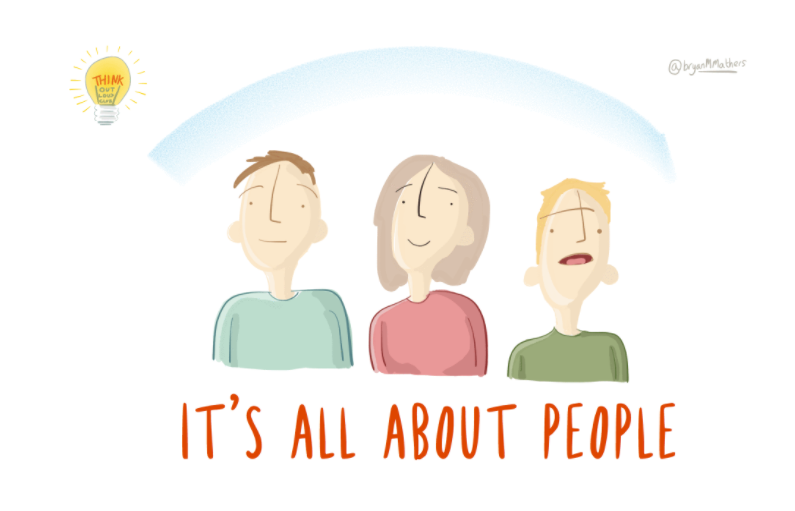 Facts Not Fear: The Truth About Digital Media and Young People Parents who are scared, who set too many limits and are always negative can create issues for their children. Some studies indicate that these parents end up having the children with the most risky online behavior.” – Yalda Uhls In a world in which the media is quick to stoke the fires of parental fears about technology and its potentially corrosive impact on their children, Yalda Uhls offers a refreshing – and reassuring – perspective. Her book, Media Moms & Digital Dads: A Fact-Not-Fear Approach to Parenting in the Digital Age, is notable in that it tackles the topics that are of concern to many parents and educators with research findings. The author brings an interesting perspective to her work: she is a mother, an educator, a media specialist, and a research scientist at UCLA. Uhls’ work offers worthwhile insights that can help us all to navigate the sometimes challenging, digital landscape. As a school principal, I periodically hear about very genuine “tech fears” that are broadly expressed as follows: the internet is a dangerous place for young people that is damaging concentration, literacy, the quality of reading and note-taking, our memories and our relationships. Those who express such concerns do so from a place of sincere care. Such questions need to be asked openly and addressed thoughtfully. Unfortunately, many of these fears are compounded by alarmist media reports. Quite often, this is why parents are scared. A typical example is a report by Sreedhar Potarazu published by CNN. Under the title, “Is Social Media Ruining Our Kids?”, the author cites a disturbing set of statistics in complete isolation from any related research on digital media, framing the disturbing title to establish an unfounded connection between cause and effect: “The 2014 National College Health Assessment, a survey of nearly 80,000 college students throughout the United States, found that 54% of students reported experiencing overwhelming anxiety in the past 12 months and that 32.6% “felt so depressed that it was difficult to function” during the same period. The study also found that 6.4% had “intentionally, cut, burned, bruised or otherwise injured” themselves, that 8.1% had seriously considered suicide and that 1.3% had attempted suicide.” There is no evident correlation between the selective, worrying findings of this survey as reported and the use of technology. This kind of reckless reporting and data manipulation contributes little of value to the necessary discourse around the use of technology among young people. The report also provides some very welcome findings that – if we are to follow the logic of the CNN report – we should also ascribe to the use of social media. These include:
Of course, data can be manipulated to tell any story we want it to tell. Perhaps a more pertinent question to ask is, why does the narrative about digital media and young people tend to focus so much on panic and fear? When I started teaching in the early 90’s I occasionally encountered the passing of notes between students. On more than one occasion, the content of the note included something typically adolescent and potentially hurtful about another member of the class. At no point did I blame the existence of paper for this phenomenon and I didn’t frown on the presence of pencils and pens in the school. The reality is that what happens online is what is happening offline and we need to focus on the behaviours, not the medium. Our concerns should be all about people, not the digital device. Writer, Danah Boyd is clear about why social media use is highlighted as the culprit and how this leads to an obfuscation of core realities: “It’s made more visible. There is some awful stuff out there, but it frustrates me when a panic distracts us from the reality of what’s going on. One of my frustrations is that there are some massive mental health issues, and we want to blame the technology [that brings them to light] instead of actually dealing with mental health issues.” Uhls bases her perspectives on actual research and real findings. She notes that there are some young people who can become absolutely addicted to digital devices, but this is a tiny minority. While she advocates for device-free time, she also assures us that we should not be alarmed about teen tech habits. Uhls is pragmatic and honest about the realities of the digital landscape, too. Multi-tasking is not something humans are naturally good at, the research has shown. It is the processing that occurs when people physically write things down that accounts for any difference in retention, not the device itself, studies reveal. While parents, she contends, still need to act like parents – setting clear guidelines, expectations, and parameters – the available research informs us of a view that is strikingly at odds with the bleak portrait that is worrying parents. So, what does the research actually say?
This good news needs to be tempered, of course, with common sense. Young people need to maintain a healthy balance between online interaction and face-to-face activities (even here the research shows that the former is driven by the healthy need for the latter). Parents are obligated to develop and maintain open dialogue with their child around trust and transparency. Fear should not govern our instincts or hinder the need to empower our young people with the appropriate uses of digital media. The true power of digital media lies in its potential to connect, communicate, and, therefore, to amplify or extend the reach or impact of a given experience. There are, sadly, documented instances where technology is clearly exacerbating certain societal issues. Increasing childhood obesity is among these concerns. There are tales of toddlers being given iPads as child-minding devices. Literacy is on the decline among the socially disadvantaged. Issues that are sometimes blamed on technology are often deeply-rooted in poor parenting, issues of self-esteem, and educational institutions with narrow conceptions of learning caused by a lack of funding or inflexible, external constraints. In the right context and culture, however, the research makes clear that digital media can positively impact and profoundly transform learning. There is no need to be scared. We must empower, not control. Young people are adapting positively to the digital age and we need to trust in their ability to do so. Blog Post: https://crowleym.com/2017/03/02/facts-not-fear-the-truth-about-digital-media-and-young-people/ NOTES Zuckerberg, Randi. “Yalda T. Uhls Wants You to Approach the Digital Age with Facts, Not Fear.” Professional Women, April 28, 2016. Potarazu, Sreedhar. “Is Social Media Ruining Our Kids?”. CNN, October 22, 2015. Bergstein, Brian. “Parents: Don’t Panic About Your Kids Social Media Habits.” MIT Technology Review, December 12, 2013. Uhls, Yalda. Media Moms & Digital Dads: A Fact-Not-Fear Approach to Parenting in the Digital Age. 2015. Image credit @bryanMMathers via Visual Thinkery. |
Proudly powered by Weebly

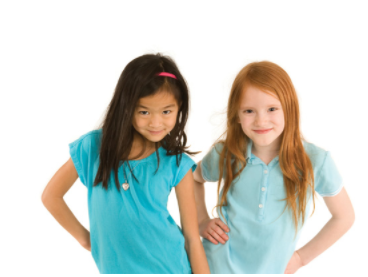
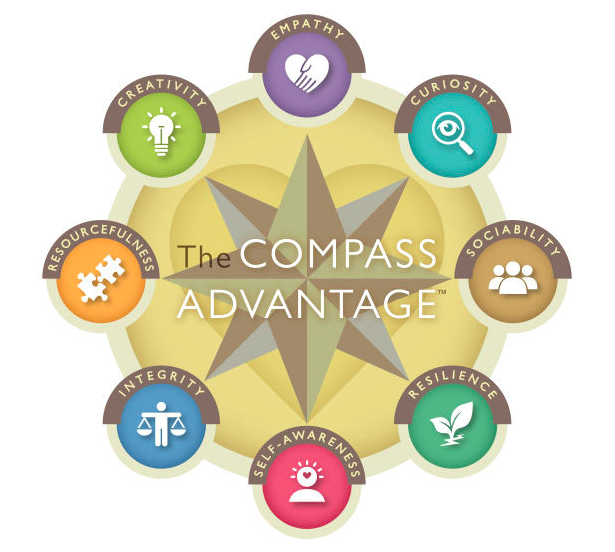
 RSS Feed
RSS Feed